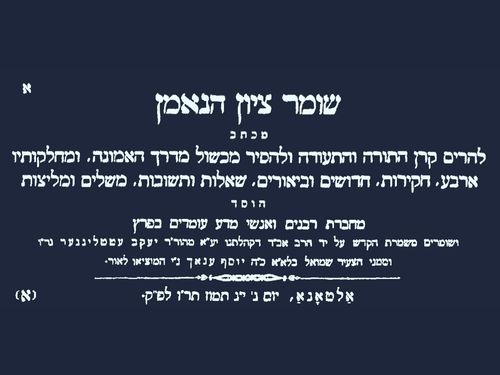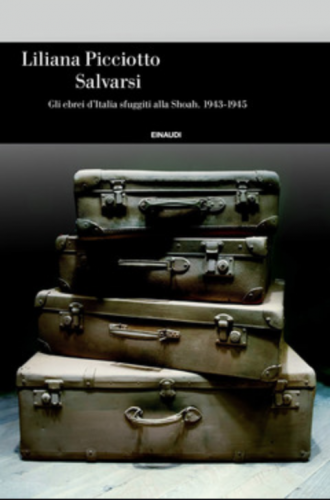
This is the third time that Quest offers its readers a miscellaneous issue. We had chosen to publish a selection of unrelated research articles previously, with issue n. 7 in July 2014 and then with isssue n. 12 in 2017. In 2019 and in 2020 we have planned to resume the publication of monographic special issues, yet we will be open to considering the possibility of publishing unrelated articles in miscellaneous issues in the future.
With this latest installment of our journal we offer the readers four articles, authored by scholars based in the U.S. and in Italy and covering diverse topics and time periods. We open the Focus section with an essay by Phil Keisman, dedicated to the study of the German periodical Shomer Tziyon Hane’eman (1846-1855), a key publication to understand the dialectic relationship between modern Orthodoxy and the developing reform movement. In an effort to comprehend the techniques employed by segments of the Orthodox world to compete with its adversaries, the author investigates the periodical’s reading public, its network of contributors, as well as its content. We then move to the analysis of a blood libel case and the ensuing trial that took place between 1855 and 1856 in North-Eastern Italy, in Badia Polesine, at the time under Hapsburg rule. Emanuele D’Antonio reconstructs in detail the episode and the Jewish responses, illustrating how the minority was able to organize its defense with the support of some Catholic intellectuals as well as the State apparatus, leading the trial to become an analytical refutation of ritual murder accusations. The third article in this issue, written by Sonia Zanier, leads the readers well into the second half of the XXth century, enquiring on the matrices of the anti-Zionist and, at times, anti-Semitic rhetorics that, since the late 1960s and through the 1970s, developed within the rich and diversified world of the Italian New Left. The last article published in the Focus section is authored by Carmen Dell’Aversano, a literary scholar who proposes a theoretical reflection on the concept of assimilation. Her approach is not a historical one. She employs Gérard Genette’s concept of hypertextuality and argues in favor of a transdisciplinary methodology, suggesting that semiotics and literary theory may offer useful insight also for a historical understanding of the issue.
The Discussion section this time is dedicated to Liliana Picciotto’s recent book Salvarsi. Gli ebrei d’Italia sfuggiti alla Shoah 1943-1945 (Turin: Einaudi, 2017), which won the 2018 award of Italian Society for Contemporary History (Sissco- Società Italiana per lo Studio della Storia Contemporanea). The book is reviewed by Juliane Wetzel and Gabriella Gribaudi.
Finally, in the Reviews section we offer concise but critical presentations of seven books dedicated to a wide range of topics.
DOI:10.48248/issn.2037-741X/39
